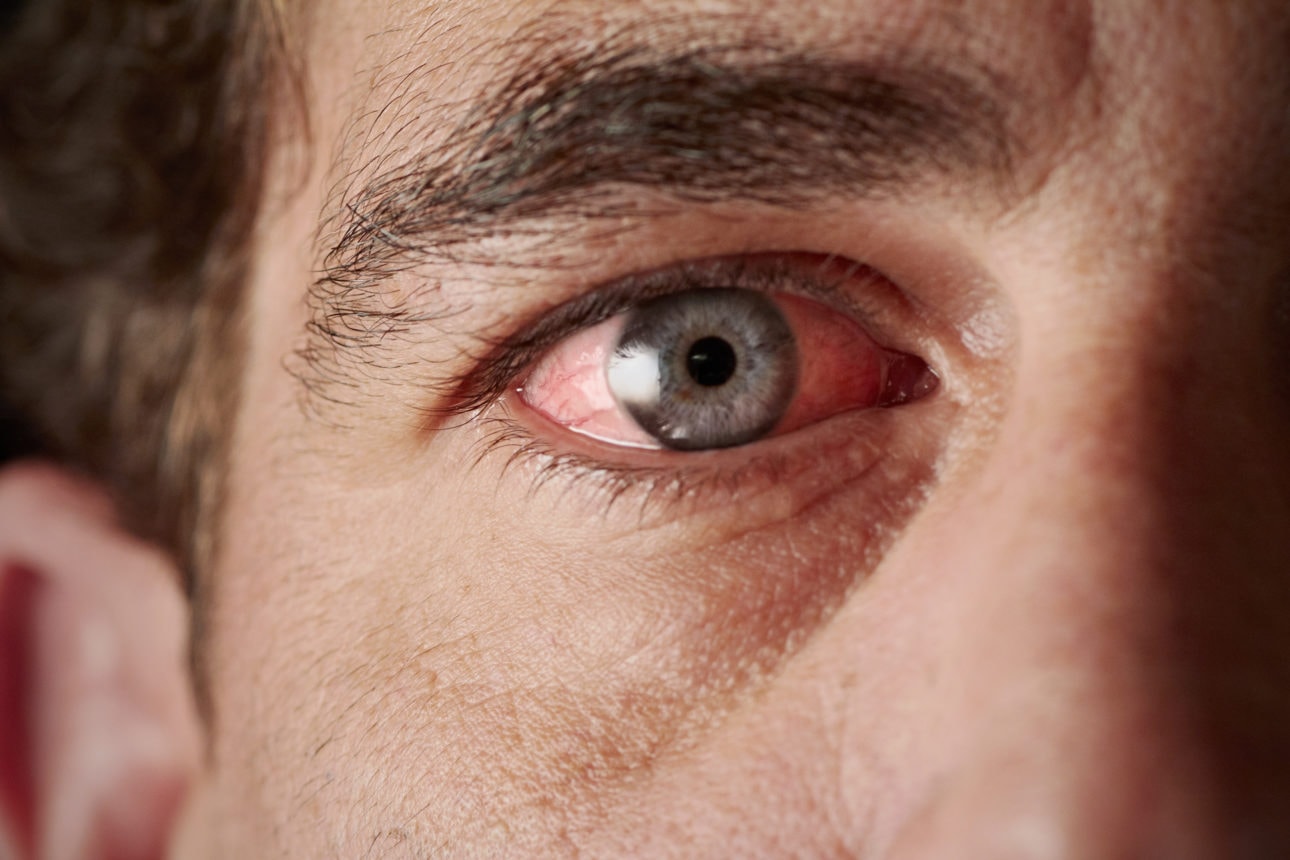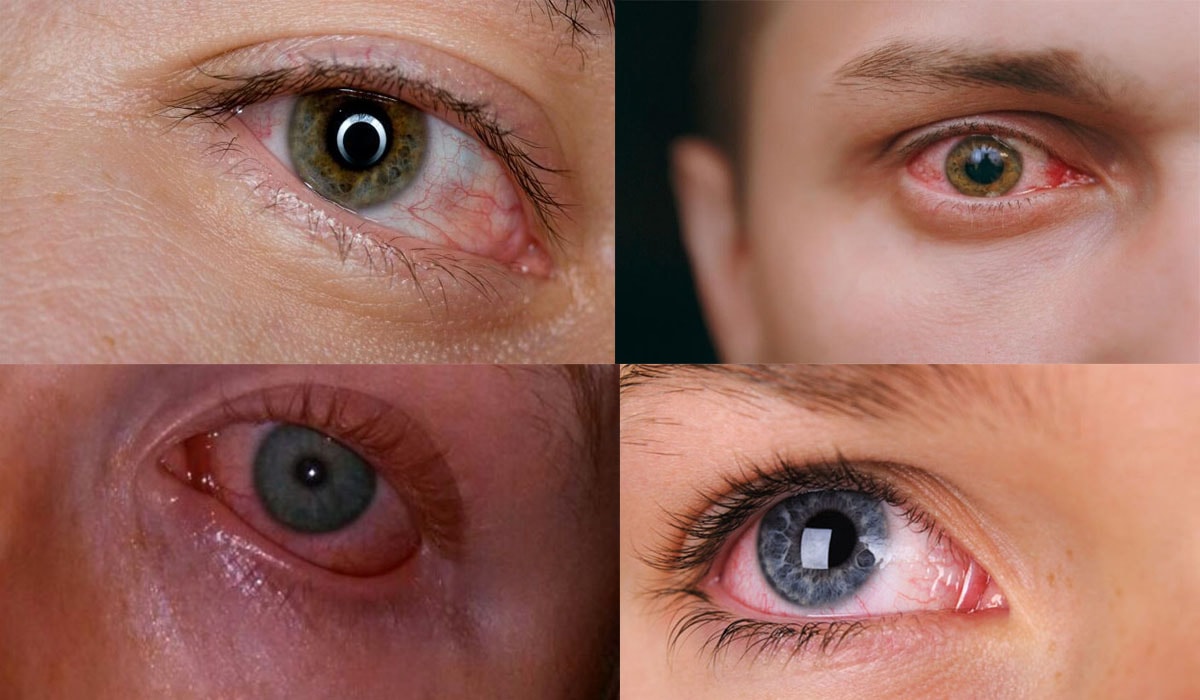Do opioids impact eye health? Yes, they do. Opioids can cause short-term issues like pupil constriction and dry eyes. Long-term use may lead to serious conditions such as optic neuropathy. This article will help you understand these risks and symptoms.
Key Takeaways
- Opioids can cause both short-term and long-term ocular effects, including pupil constriction, dry eyes, optic neuropathy, and increased intraocular pressure.
- Persistent visual disturbances, such as blurred or double vision, may indicate serious underlying ocular damage and require immediate medical attention.
- Routine eye examinations and proactive management are essential for patients on opioid therapy to identify and mitigate potential eye health complications.
How do opioids affect eye health?
Opioids, often prescribed for pain management, can have a range of effects on eye health. These substances interact with opioid receptors in the brain and body, leading to various ocular manifestations. Short-term use of opioids can result in symptoms like pupil constriction, dry eyes, and blurred vision, while chronic use could lead to more severe issues such as optic neuropathy and increased intraocular pressure.
Medical research has shown that opioid use can significantly alter eye function and potentially cause lasting vision problems. Given the widespread prevalence of opioid addiction, understanding these impacts is vital for both patients and healthcare providers.

Common short-term effects on the eyes
Short-term effects of opioid use on the eyes are often immediate and noticeable. One of the most common ocular manifestations is pinpoint pupils, or miosis, where the pupils constrict significantly and react slowly to light. This can result in blurred vision and increased sensitivity to light, complicating the ability to focus on objects or read text.
Other adverse effects include dry eyes due to reduced tear production, dizziness affecting visual stability, and even temporary visual disturbances caused by drowsiness and sedation. Although these symptoms may seem benign, they can significantly disrupt daily activities and overall eye health.
Long-term or chronic effects
Chronic opioid use can lead to more severe and lasting eye health issues, including:
- Optic neuropathy, where the optic nerve is damaged, potentially leading to vision loss
- Eye tremors, known as nystagmus
- Drooping eyelids (ptosis), both of which can impair vision
Additionally, increased intraocular pressure is a significant risk for those on long-term opioid therapy, potentially exacerbating conditions like glaucoma. It’s essential to recognize these adverse effects early to prevent irreversible damage to the eyes.
Research-backed evidence
Clinical studies have highlighted the serious ocular complications associated with opioid use. For instance, intravenous opioid abuse has been linked to retinal ischemia, a condition where the blood flow to the retina is obstructed, leading to vision loss. Other research indicates that opioid use can cause lasting changes in eye function, further emphasizing the need for early recognition and intervention in cases of retinal vascular occlusive disease.
The National Institute on Drug Abuse has also noted that opioids can cause significant changes in pupil size and reaction, contributing to various vision problems. These findings underscore the importance of understanding the full scope of the opioid crisis and its impact on opioid-induced eye health issues.
Opioid-induced vision issues: When to worry
Opioid use can lead to a range of vision-related issues, from minor visual disturbances to severe optic neuropathy. Recognizing when these symptoms become medically concerning is crucial for timely intervention. Persistent blurred vision or double vision can be early indicators of more serious underlying problems. Patients experiencing such symptoms should seek medical attention to prevent potential long-term damage.
Understanding the signs of optic nerve damage and the ocular manifestations of opioid withdrawal can guide individuals in seeking appropriate care.

Persistent blurred or double vision
Persistent blurred or double vision is a significant indicator that opioid use is affecting eye health. These visual disturbances can result from changes in the muscles controlling eye movements or neurological pathways affected by opioids. Continuous episodes of blurred vision or double vision are not just side effects; they could signal underlying damage that requires immediate medical attention.
Patients on long-term opioid therapy who experience these symptoms should consult their healthcare provider to rule out serious complications such as optic neuropathy or retinal ischemia, as well as to address any concerns related to opioid dependence. Early intervention can prevent these conditions from progressing to more severe stages.
Signs of optic nerve damage
Damage to the optic nerve due to opioid use can manifest in several ways. Symptoms such as reduced peripheral vision, color desaturation, and central vision loss may indicate serious optic nerve injury. These changes often require urgent medical evaluation to prevent permanent damage.
Optic neuropathy may also present as optic disc edema followed by pallor if not treated promptly. Chronic opioid use can lead to changes in the optic nerve structure, potentially resulting in irreversible vision loss.
Eye problems during opioid withdrawal
Opioid withdrawal can manifest in various eye issues, including:
- Discomfort
- Temporary vision disturbances
- Rebound dilation, where pupils become unusually large
- Increased tearing
- Twitching These symptoms are common during detoxification.
Esotropia, a condition where one or both eyes turn inward, has also been observed as a rare withdrawal symptom among opioid addicts, typically resolving spontaneously without medical intervention. Understanding these symptoms, including acute esotropia, can help individuals manage their expectations during the withdrawal process.
How do different opioids compare in their impact on eye health?
Different opioids can have varying effects on eye health, depending on their specific pharmacological properties. Prescription opioids, synthetic opioids, and medications used in medication-assisted treatment (MAT) all impact vision differently.
Understanding these differences can help patients and healthcare providers make informed decisions about opioid use and its potential ocular side effects.
Prescription opioids (e.g., oxycodone, hydrocodone, morphine)
Prescription opioids like oxycodone, hydrocodone, and morphine are commonly associated with side effects such as blurred vision and dry eyes. These drugs can cause miosis, leading to visual disturbances that may affect daily activities.
Patients using these medications should be aware of these potential side effects and seek medical advice if they experience persistent vision problems.
Synthetic opioids (e.g., fentanyl, tramadol)
Synthetic opioids, such as fentanyl and tramadol, are known for their high potency and can lead to more severe visual disturbances. Fentanyl, for example, is significantly more potent and often linked to fentanyl addiction, which can lead to increased intraocular pressure and complicate glaucoma management.
Tramadol, while less potent, can still cause dizziness and vision issues, especially in cases of tramadol addiction.
Buprenorphine and methadone (used in MAT)
Buprenorphine and methadone, used in MAT, have differing mechanisms that can impact vision. Buprenorphine can cause pupil constriction, and in the long-term use of buprenorphine, these effects may lead to ongoing visual disturbances. Methadone has also been linked to visual disturbances in some studies.
There is also concern about the potential impact of these medications on eye development in infants if used during pregnancy. Understanding these risks can help in making informed decisions about MAT.
Can opioid-related eye issues be reversed?
The reversibility of opioid-related eye issues often depends on the duration and severity of exposure. Many opioid-induced eye issues are transient and can resolve after stopping the drug. However, severe cases may lead to lasting damage if not addressed promptly.
Managing these conditions involves understanding which symptoms are temporary and which may indicate permanent damage, along with appropriate treatment options.
Are effects temporary or permanent?
Many eye issues caused by opioids are temporary and resolve after discontinuing the drug. However, some effects, particularly those resulting from prolonged or heavy opioid use, can lead to lasting vision impairment.
Early intervention and regular monitoring can help mitigate these risks and preserve eye health.
Treatment options
Treatment options for opioid-related eye issues include artificial tears for dry eyes, vision therapy for visual disturbances, and medications to reduce intraocular pressure. In some cases, referral to an ophthalmologist for specialized care may be necessary.
Rehabilitation often combines medical management and clinical management to address underlying visual issues and improve overall eye health.
Who is most at risk for opioid-related eye complications?
Certain groups are more at risk for developing eye complications from opioid use. High-dose or long-term users, patients with pre-existing eye conditions, and those co-using other medications are particularly vulnerable.
Understanding these risk factors can help healthcare professionals in identifying individuals who may need closer monitoring and preventive care.

High-dose or long-term users
Individuals using opioids at higher doses or for extended periods are at a significantly increased risk of developing serious eye-related complications. The cumulative dose exposure can lead to persistent ocular adverse effects, including chronic dry eyes and potential vision loss.
Long-term opioid use can exacerbate existing eye issues and introduce new complications, such as increased risks of infections and respiratory depression, which indirectly affect eye health. Regular eye exams for these patients can aid in early detection and management of emerging issues.
Patients with pre-existing eye conditions
Patients with existing eye conditions, such as glaucoma or diabetic retinopathy, face heightened risks of severe complications when using opioids. These individuals are more likely to experience worsened visual symptoms due to the compounded effects of their pre-existing conditions and opioid use.
Additionally, patients with a history of eye surgeries may also be at higher risk for complications related to opioid-induced side effects. Awareness and proactive management can help mitigate these risks.
Co-use with other medications
Combining opioids with other medications, particularly central nervous system depressants like benzodiazepines or alcohol, significantly heightens the risk of experiencing adverse eye effects. These combinations can impair cognitive and respiratory functions, which indirectly affect eye health.
Patients taking both opioids and benzodiazepines are at a tenfold increased risk of opioid overdoses compared to those using opioids alone, making it crucial to monitor for potential eye-related side effects.
What should patients and providers do?
Patients and healthcare providers must take proactive steps to mitigate the risks of opioid-related eye complications. This includes discussing any changes in vision or eye discomfort with healthcare providers promptly. Educating patients about the risks and benefits of opioids enables informed decision-making regarding their use.
Regular screening and monitoring can aid in early detection and management of eye health issues arising from opioid use.
When to contact an eye specialist
Immediate consultation with an eye specialist is necessary if patients experience sudden vision changes or persistent eye pain while using opioids. Symptoms like prolonged redness, swelling, or discharge from the eyes should also prompt a visit to an eye care professional.
Patients experiencing persistent visual disturbances or significant eye pain should not delay seeking medical advice, as early intervention can help reduce pain for such patients and prevent more severe pain complications related to visual acuity.
Monitoring eye health in opioid therapy
Routine eye examinations are advised for individuals on opioid therapy to catch potential vision issues early. Baseline and periodic vision screening can help in identifying emerging problems before they become severe.
Regular assessment of eye health and visual function in patients undergoing long-term opioid therapy is crucial for maintaining overall eye health.
Adjusting or tapering medications
Healthcare providers should regularly evaluate the necessity of continued prescription opioid therapy and consider tapering when appropriate to minimize risks. Gradual tapering is generally better tolerated and can minimize withdrawal symptoms, reducing the risk of vision issues.
In some cases, transitioning to buprenorphine or other MAT options may be advisable for patients who have an unfavorable risk profile with high-dose opioids. Close monitoring during this period is essential to ensure patient safety and effective management of vision issues.
Bottom Line: Do Opioids Impact Eye Health?
In summary, opioid use can have significant impacts on eye health, ranging from short-term effects like pinpoint pupils and blurred vision to long-term complications such as optic neuropathy and increased intraocular pressure. Different types of opioids, including prescription opioids, synthetic opioids, and MAT medications, vary in their effects on vision, with some causing more severe ocular disturbances than others.
Understanding these risks and recognizing when to seek medical attention can help mitigate the potential eye health issues associated with opioid use. Regular monitoring, proactive management, and informed decision-making are key to preserving eye health while managing pain effectively. Let this knowledge empower you to take control of your eye health and seek the necessary care when needed.
FAQs about opioids and eye health
Can opioids cause permanent eye damage?
Opioids can cause permanent eye damage, particularly depending on the duration and type of use, even if some effects may be reversible. It is crucial to be aware of these risks when using opioids.
Why do opioids make my pupils tiny?
Opioids induce pupil constriction, known as miosis, by stimulating the parasympathetic nervous system, which regulates pupil size. This response is a common physiological effect of opioid use.
Are eye drops safe to use with opioids?
Eye drops are typically safe to use with opioids; however, it is advisable to consult a healthcare provider for personalized recommendations.
Is vision affected during opioid withdrawal?
Yes, vision can be affected during opioid withdrawal, resulting in symptoms such as blurred vision and light sensitivity, which generally improve over time.
When should I contact an eye specialist while using opioids?
Contact an eye specialist immediately if you experience sudden vision changes or persistent eye pain while using opioids. Prompt attention is essential to address any potential issues.
















